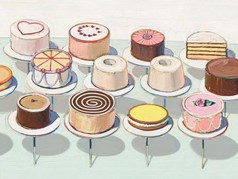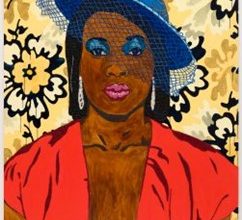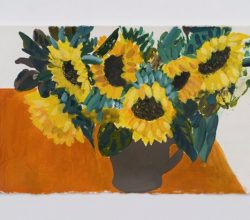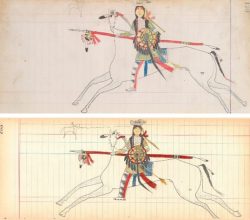
Having His Cake and Eating It, Too
Jessica Zack | Alta | 12th October 2020
Thiebaud is turning 100 and getting various celebratory shows. He still thinks his work is joyous, which it is. But it’s more. Very much the realist painter, he is attracted by colour and shape. Cakes, for example, offer a “nobility of abstract form: prisms and wedges, disks and cylinders”. Aspiring to emulate “heroes” like Morandi, his is a demanding style – “it’s actually almost ludicrous that anybody would do it”.



